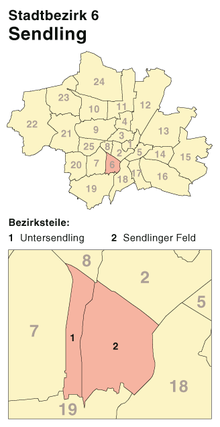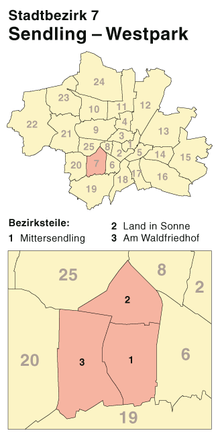Overview
Sendling is mainly a residential quarter, with shops and businesses straddling the Plinganserstraße around the historical core of Sendling. It is a multicultural quarter, with one of the largest rates of foreigners among the population. The proposed site for the new mosque in Sendling is located at Gotzinger Platz, opposite St. Korbinian Church. Supposedly, this neighborhood boasts the best falafels in town, located in the Valleystrasse.
Harras, an urban square near the historical centre of Sendling, is the busiest square of the borough. A number of shops and businesses line the square; Plinganserstraße, an important traffic artery running from north to south, skirts Harras in the east. A railway station, Harras Station, is located nearby, serviced by U-Bahn metro and S-Bahn suburban trains. Harras is the business point in Munich-South. There are many shops, working places and two of the biggest schools in Munich: Dante-Gymnasium and Klenze-Gymnasium.
The Westpark is a large recreational park located in the west of the borough. It was laid out for the International Gardening Exhibition that took place in Munich in 1983. Munich's main traffic artery, the Mittlerer Ring, cuts right through the park and divides it into an eastern and a western park. [1]
Sendling is served by the U-Bahn metro lines 3 and 6 as well as the S-Bahn suburban trains 7, 20 and 27. Harras Station is served by some regional train services, as well.
The Wholesale Market Munich, in the eastern part of the borough, is Europe's third-largest grocery market as well as the borough's largest single employer.
In the very northeast of Sendling the Alte Utting is located, a nightlife spot and attraction that became known far beyond Munich's city borders.
This page is based on this
Wikipedia article Text is available under the
CC BY-SA 4.0 license; additional terms may apply.
Images, videos and audio are available under their respective licenses.





